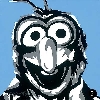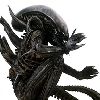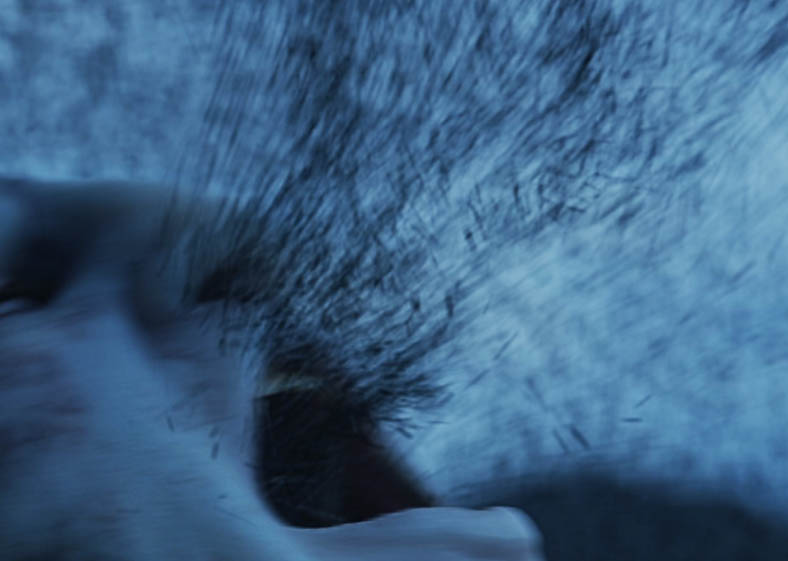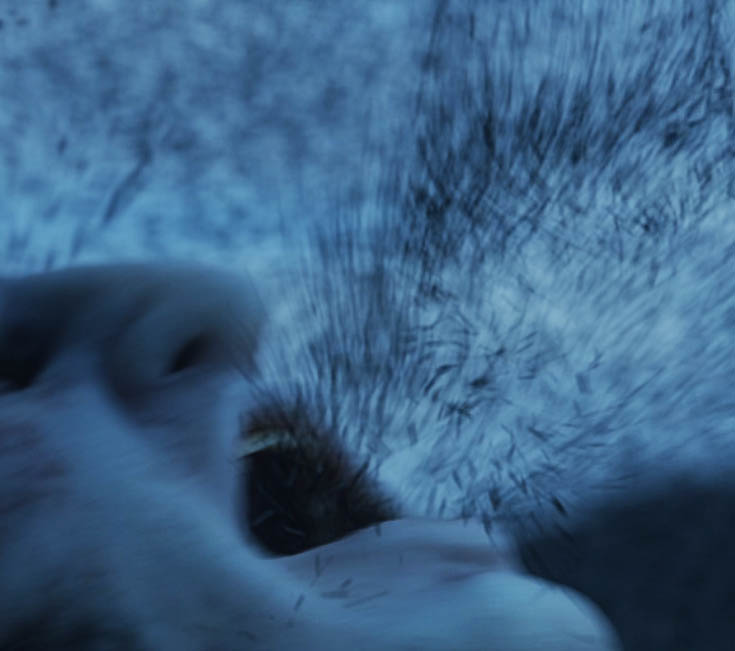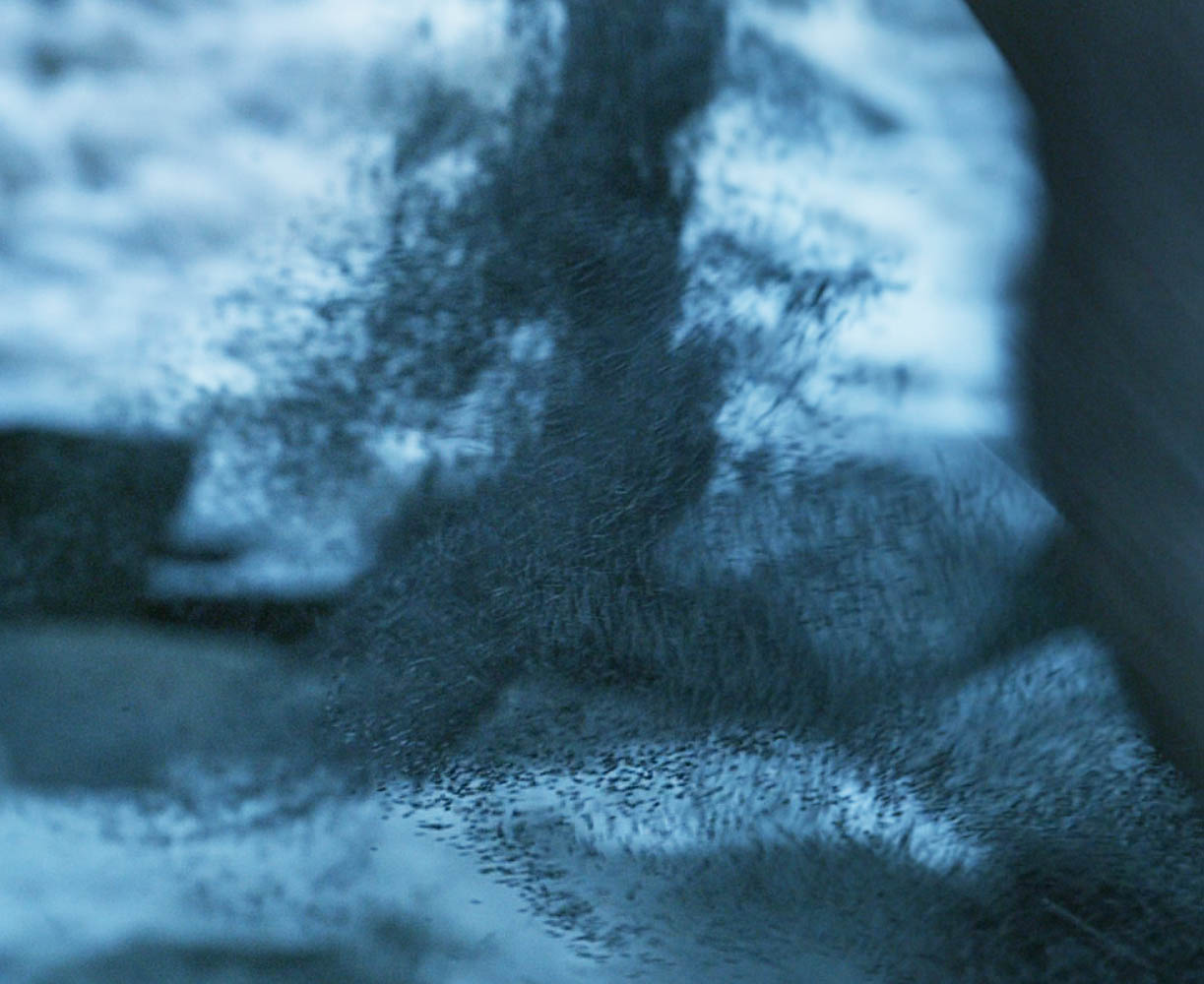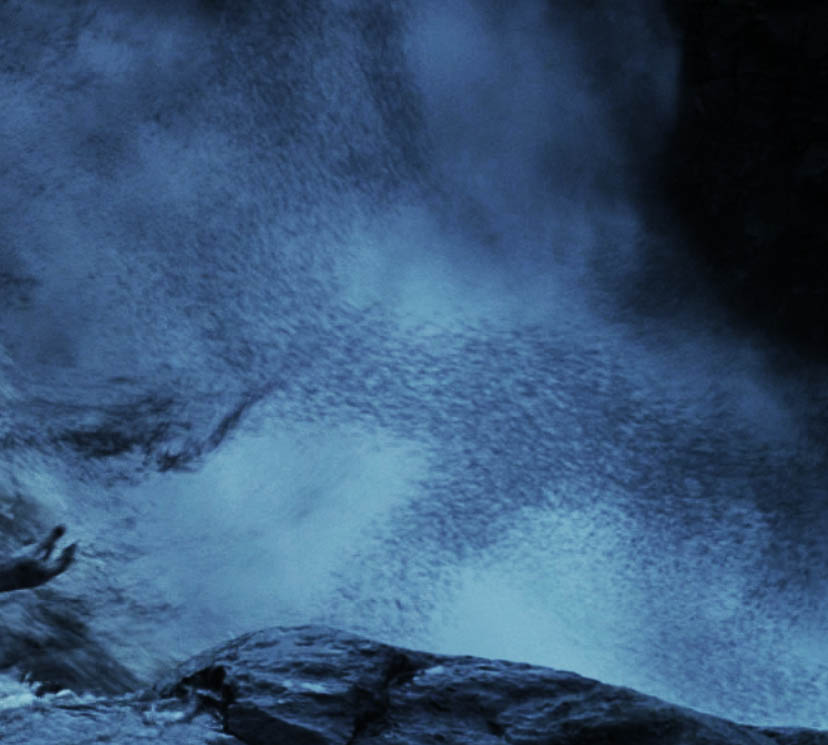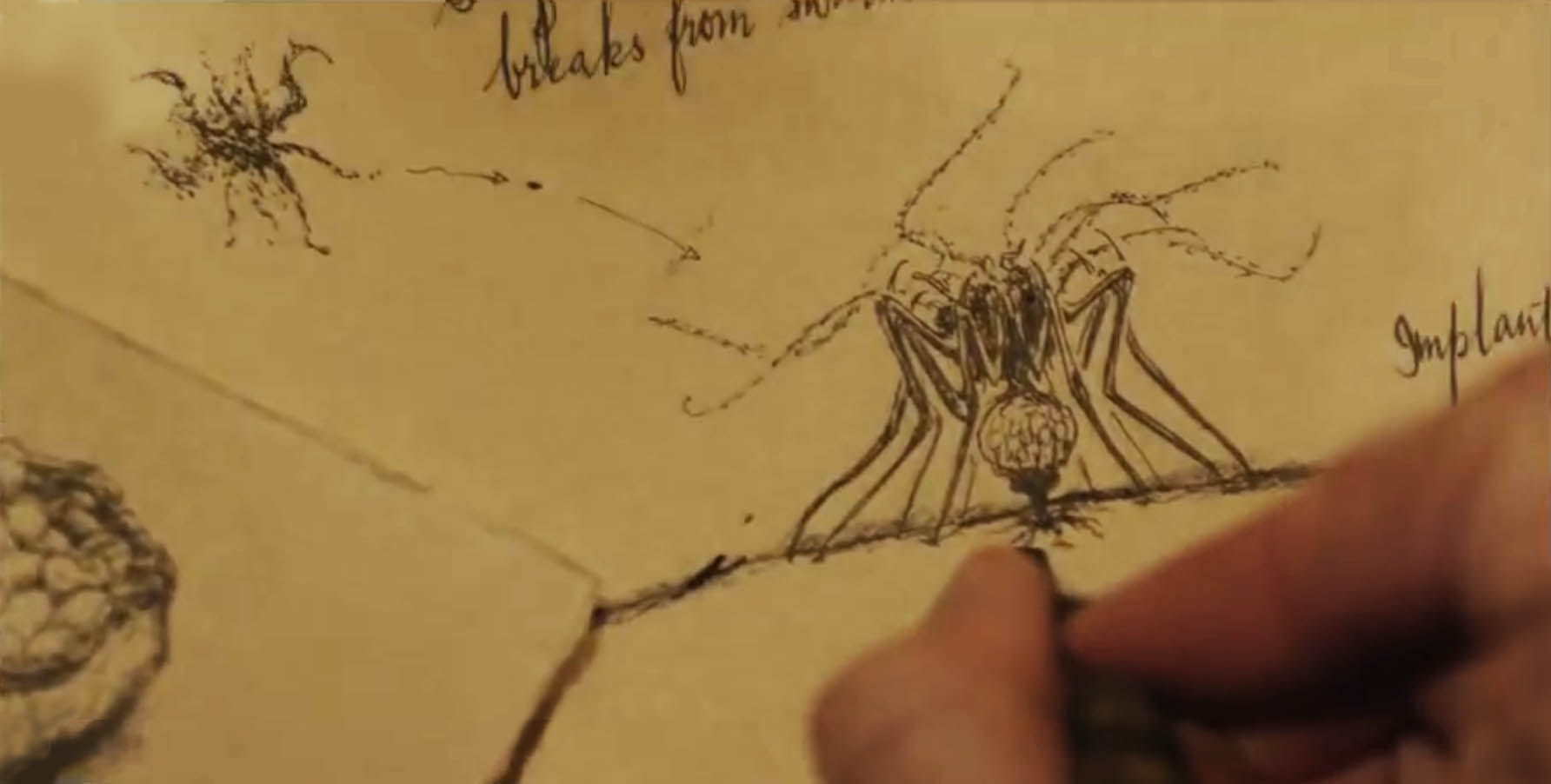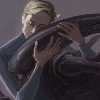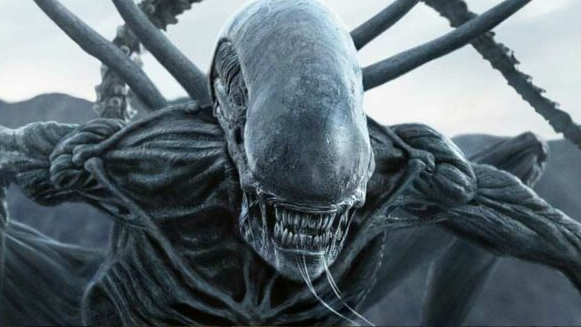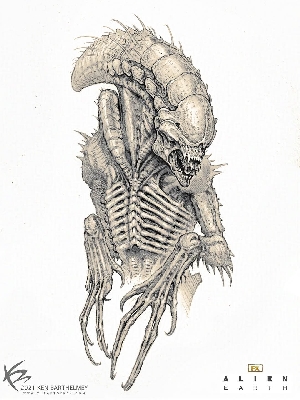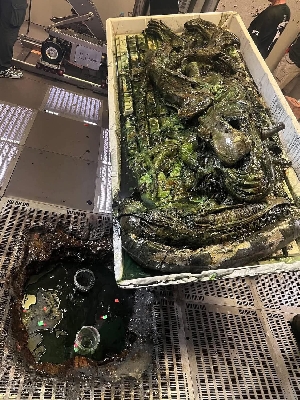How David Created the Xenomorph. (Containing Advent information)
Alien: Covenant Forum Topic

Yog Sothoth
MemberFacehuggerAugust 13, 201730469 Views17 Replies
I’m a massive fan of the Alien films, (even the ones everyone hates). I have seen Alien: Covenant a few times now and read the official novelization. I fully recommend any fan of Alien: Covenant to read the novel as it expands on some of the limited information in the movie.
Something was bugging me (pun intended) about the scene in David’s lab when he is explaining to Oram what he was doing with his experiments. We see a scene where David looks down the microscope at some amber, containing what looks like tiny wasp-like insects, sticking long feeding tubes into some small grub like creature. Having debated this point with a few posters on this forum, namely Kethol, whom I credit with showing me the error in my previous edits of this topic, I have noticed that these wasp-like creatures are the *same thing* as those tiny clouds of black things we see coming from those fungal egg sacs. They are called “motes” in the novel, but the movie does not really make it clear that what we are seeing are tiny tiny insects, which infect both Ledward and Hallet. David calls them “the shock troops of the genetic assault”. I was initially sceptical that the insects in the amber are the same as the motes, but having read the novel and seen new evidence from the Advent material, I can conclude they are indeed the same. Here is a screen grab (thanks to Kethol for this) of David drawing one of the motes, breaking away from the swarm. It obviously looks like one of those waspy insects from a head on perspective, pumping eggs into the skin of some creature through its mouth, just as a facehugger would act. -
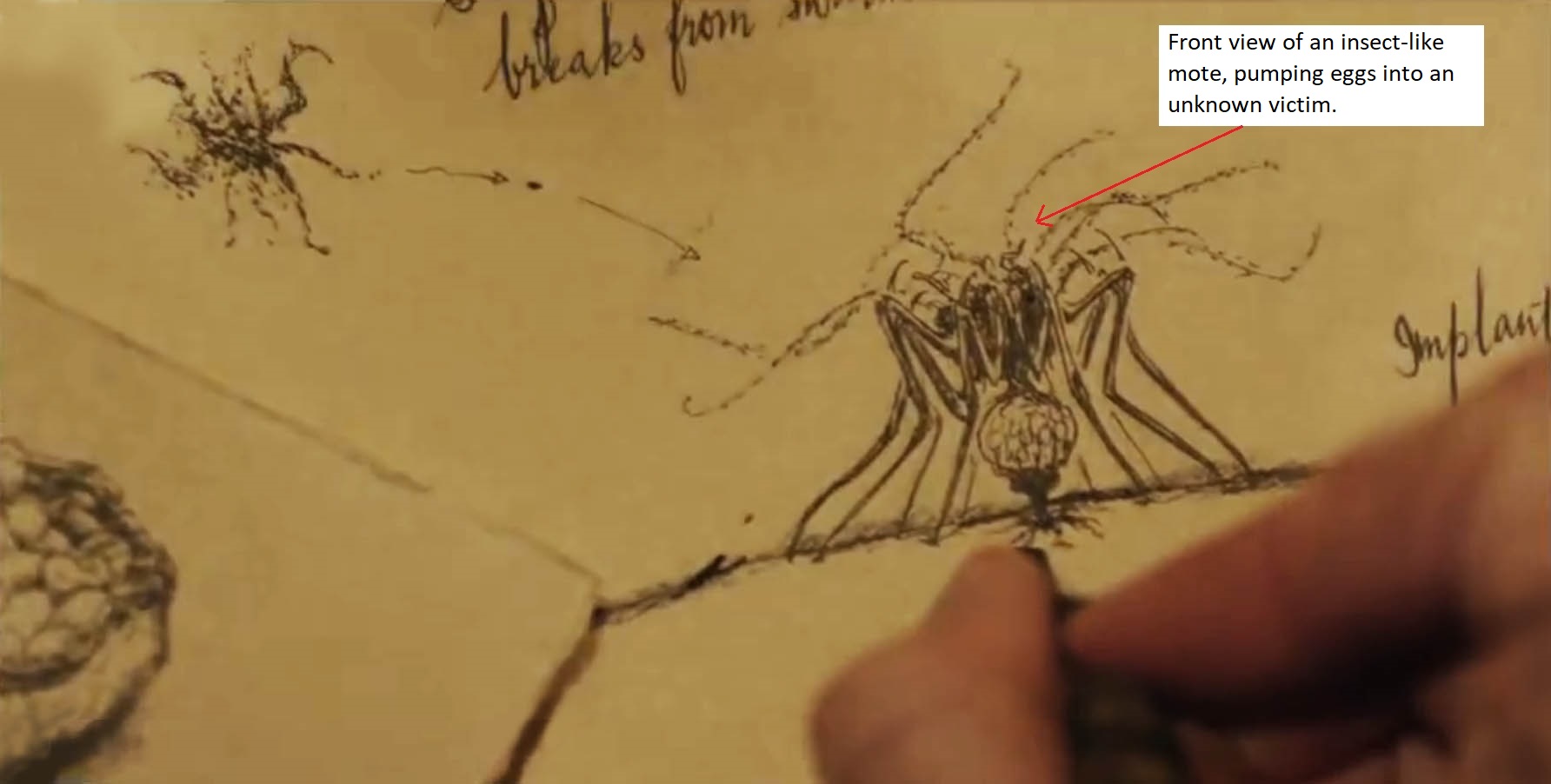
I was also sceptical that actual insects (even alien insects) could be so extremely tiny as to fly, as a group into a human ear hole, such as Ledward’s. Well I was wrong there as well. According to Wikipedia, the smallest insects in the world are indeed a type of tiny wasp called “Fairyflies”, which can be as small as 0.139 mm, with the smallest flying insect being 0.15 mm long. Insanely tiny. So obviously the motes in Alien: Covenant would work as tiny flying insects. https://en.wikipedia.org/wiki/Fairyfly
When we see these tiny insects enter Ledwards ear, they seem to simply burrow into his skin, rather than using mouth tubes to infect him with a Neomorph. Obviously this is how they attack a larger victim. A smaller victim, such as another insect, would require the tube method of infection. This we see frozen in time in David’s amber. -
.jpg)
I think these insect parasites came about when the black goo, infected some local fungus type creature. This alien fungus, before it was infected and mutated, possibly bred by growing fruiting bodies (the most visible part of the fungus), then expelling spores into the environment, just as Earth fungi do. But the black goo mutated it and caused the spores to become these tiny parasitic wasp insects. This is similar to how Holloway’s sperm became a trilobite and Shaw’s eggs became the xenomorph eggs (more on this below).
David claims that he has tested the tiny insect like “motes” (as the novel calls them), on different creatures, which has led to his “beautiful bestiary” of differing kinds of neomorphs which popped out of them. These are David’s early experiments and most are not linked to his eventual xenomorph eggs. -
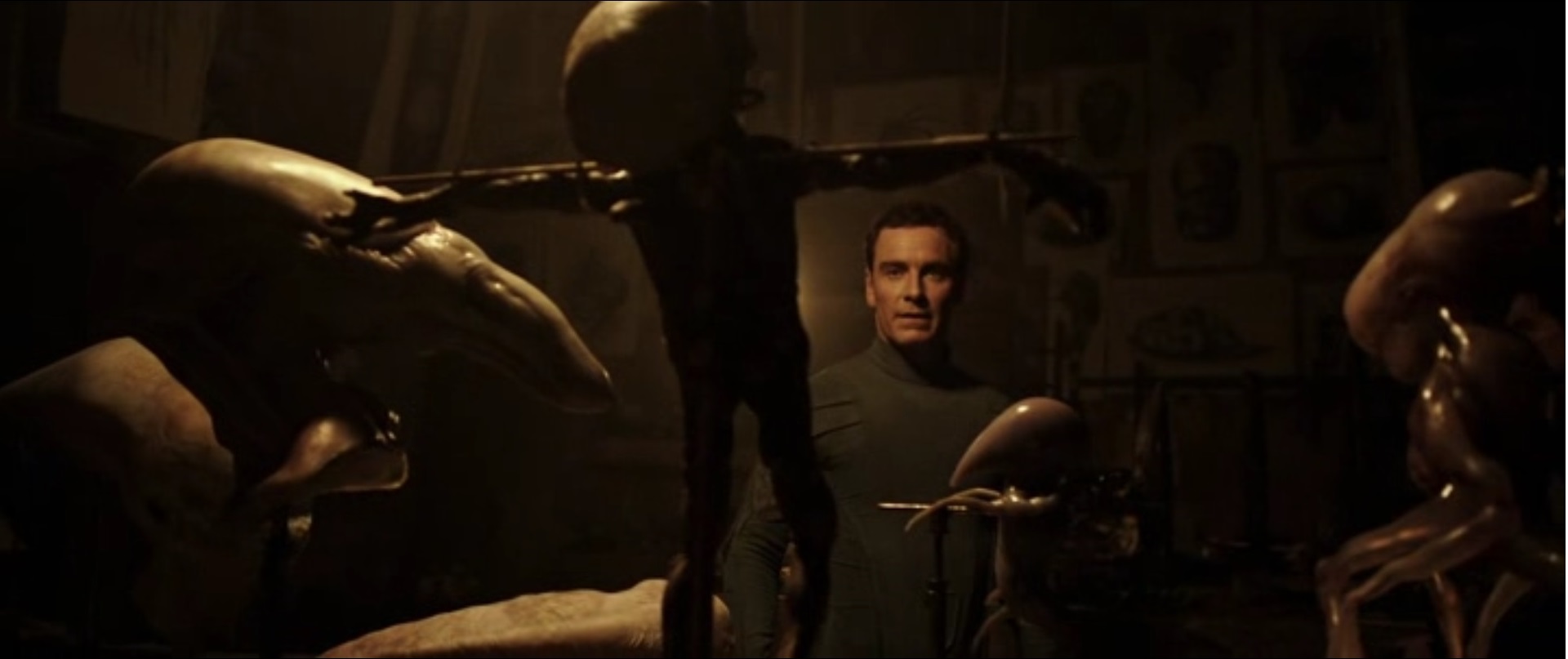
The novel states that David has a dead xenomorph egg and facehugger in his lab already. He tells Oram that he had to kill it as it became aggressive. He also says it had “nothing to do with” him and it was created previously by the Engineers. Thus the novel has David trying to recreate the Xenomorph which the Engineers had already made. Ridley Scott has changed this however and has stated it was David who originated the xenomorphs.
David was not using ‘Genetic engineering’ to make the Xenomorph. His lab seems no where near equipped for the task of complex gene splicing etc. David’s lab seems to be of only 19th century level complexity. David also claims in the novel that he lacks genetic engineering knowledge which the Engineers had in their creation abilities.
From the evidence presented in the novel, the movie and the new Advent extended material, we now know that to create (or recreate) the Xenomorph, David infected the possibly sleeping Shaw, with the black goo. Thus causing the mutations we see on her corpse. David calls Shaw his most “beautiful subject”. By subject, he means experimental subject in this context. It seems only logical, knowing the effects of the black goo in Prometheus, that the goo mutates its victim and affects their reproductive system. In Prometheus, the black goo caused Holloway’s sperm to mutate into a squid-like trilobite, which later grew inside Shaw. By extension it must be assumed that if the black goo infects a female (Shaw), then it would effect her egg cells, mutating them into the xenomorph eggs containing the facehuggers which we see. I think David probably overdosed Shaw with the black goo and that is what killed her.
David tells Oram that he was doing “cross-breeding” or “hybridizing” for his “genetic experimentation”. I have been thinking about the artwork relating to Shaw, from David’s workshop and what it all means etc. Obviously it is very difficult to decipher, but overall, the artwork seems to indicate that David was trying to mix the DNA of the mutated Shaw, with that of a neomorph, which had emerged from some other creature, which was infected by the motes.
From the new “Advent” extended material, we see basically a rough overview of what David was doing in his lab in order to form the xenomorph eggs. We see him taking various small samples from parts of dead neomorphs on his table. And mixing them together in a dish with what could also be Shaw’s mutated eggs. David mixes in some of the black goo, which possibly acted as a catalyst to bond the Shaw and neomorph DNA together, due to mutations of both genomes happening in close proximity. This mix then grew into a hybrid xenomorph egg and he repeated the process. He says in Advent that he was “tweaking” the creature for aggression etc. He probably did this by mixing tissue samples from different kinds of neomorph with Shaw’s mutated eggs, in order to get the resulting aggressive facehuggers he desired. This explains what David meant by “crossbreeding, hybridization” and that he wanted Oram to see his “successes”. It also explains one of David’s drawings, which shows what looks like a neomorph inside a cell..pressed up against another cell with a mutated Shaw inside. -
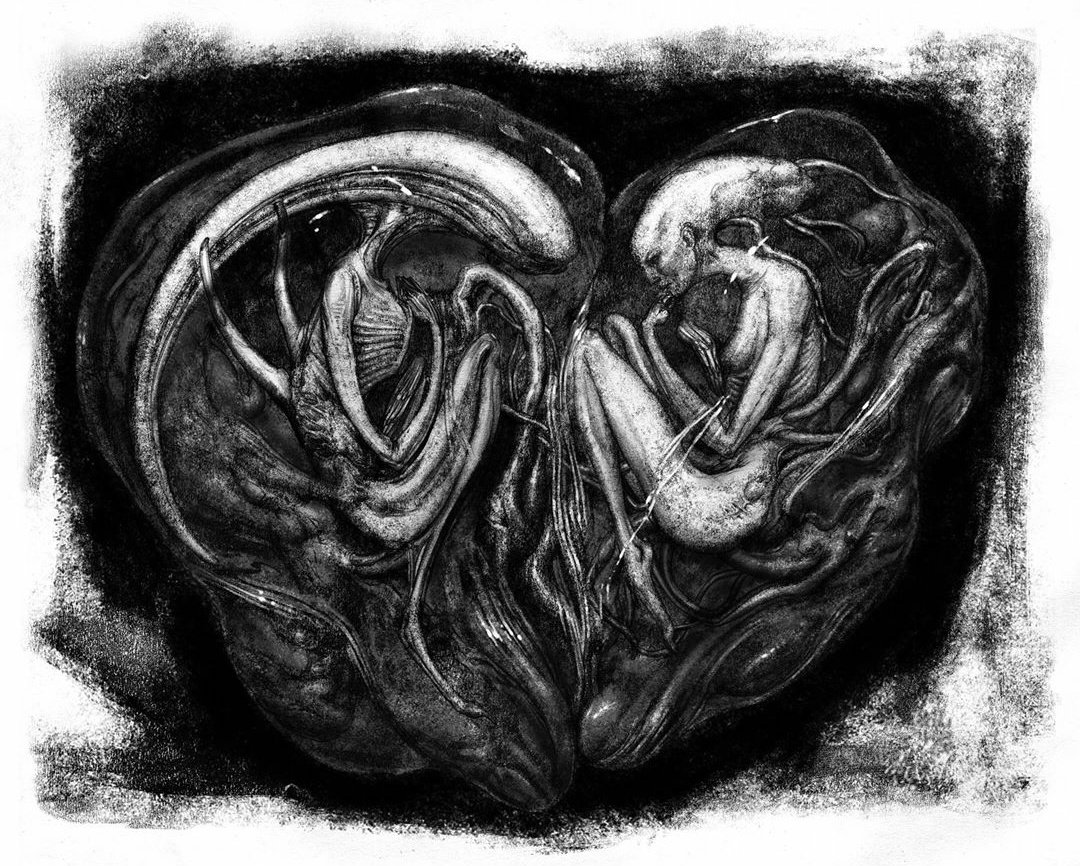
I think this drawing is a symbolic or simplified image of what David was trying to achieve. Mixing the mutated Shaw DNA with the neomorph DNA, using the black goo as a catalyst. I think even without this DNA mixing, Shaw’s infected eggs would have grown into xenomorph eggs on their own, but this addition of neomorph DNA to her egg cells, was just an act of tweaking by David. -





This drawing shows Shaw with her midsection opened up. Obviously David was interested in her ovaries. -

Another point to note is this scene in David’s lab, which seems to show small versions of the xenomorph eggs. I’m not sure what these are but they are either the result of David mixing different sorts of neomorph DNA with Shaw’s eggs to create smaller xenomorph eggs…or they are just standard xenomorph eggs that David has killed at an early stage of development, for whatever reason. -
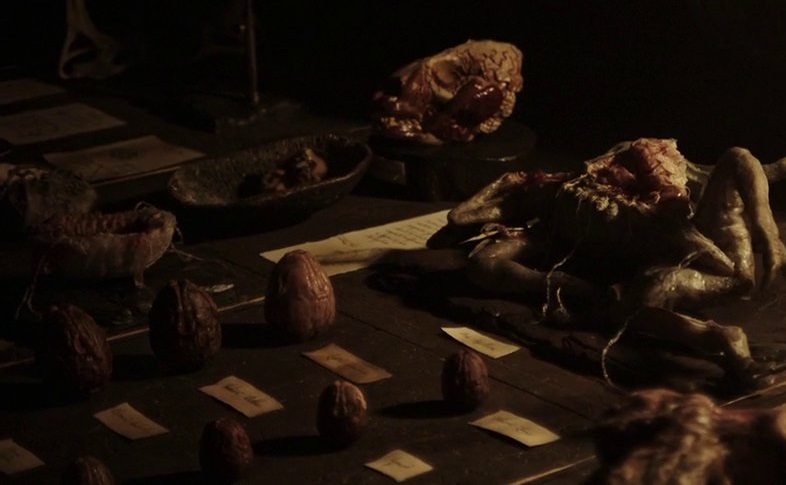
Towards the end of the Advent material, we see the revelation that David wants to use Daniels to create his xenomorph Queen. I don’t know what this might involve, but I’m guessing one of those facehugger embryos he has stored in the freezer, is a Queen facehugger, and when he thaws it out, he will cause it to grow somehow, and then stick it on Daniels’ sleeping face, thus implanting her with the first Alien Queen. This is a bit like Ripley, who got Queen facehugged in her Cryotube, at the start of Alien 3.
Anyway, thanks for reading and I hope this contributes to clearing up some misunderstanding of this Xenomorph origin story. Special thanks again to Kethol for contributing to my understanding of this canon. We still disagree on a few small points however.

